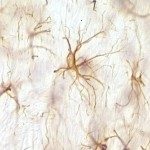Link to Pubmed [PMID] – 7570631
Toxicon 1995 Apr;33(4):459-74
Mamba venoms contain pharmacologically active proteins that interfere with neuromuscular transmission by binding to and altering the normal functioning of neuronal proteins involved, directly or indirectly, with regulating nerve transmission. Of the mamba toxins studied to date, many act on voltage-sensitive K+ channels, nicotinic or muscarinic acetylcholine receptors, or acetylcholinesterase. In an attempt to clone, characterize, and express the genes encoding these toxins, as well as other genes specifying activities not completely elucidated as yet, a cDNA library was constructed from mRNA isolated from the glands of the black mamba. Clones from the library harboring sequences encoding 14 different mamba toxins were isolated and characterized by nucleotide sequence analysis. Genes coding for three proteins, dendrotoxins (DTX) K, I, and E, were expressed as maltose-binding (MBP) fusion proteins in the periplasmic space of Escherichia coli. The DTXK-MBP fusion protein was affinity purified, cleaved from its chaperon, and the recombinant DTXK purified from MBP. Recombinant DTXK was shown to be identical to native DTXK in its N-terminal sequence, chromatographic behavior, convulsion-inducing activity, and binding to voltage-activated K+ channels in bovine synaptic membranes. Computer modeling was employed to create three-dimensional structures of DTXK and DTX1 from the X-ray crystal structure of alpha-DTX utilizing both structural and sequence homologies. Comparisons were made between the three toxins, providing a framework for site-directed mutagenesis.

